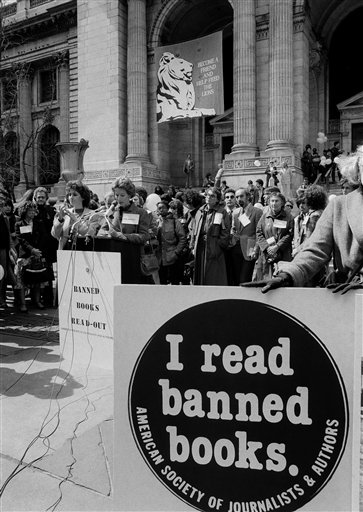The right to receive information and ideas is an important principle in First Amendment law that surfaces in a variety of contexts. Normally, the right emphasizes that in a given free-speech controversy, the First Amendment interests extend beyond the rights of the speaker and include the rights of the recipients to access information and ideas.
The U.S. Supreme Court or lower courts have emphasized the concept in cases involving distribution of religious literature, private possession of obscene materials, commercial speech, library censorship, and filming the police.
Right to receive information coupled with First Amendment right to distribute information
Scholars generally trace the concept to a 1940s Jehovah’s Witnesses case Martin v. City of Struthers (1943), involving a woman who distributed religious materials door-to-door. Writing for the Court, Justice Hugo Black reasoned: “This freedom embraces the right to distribute literature, and necessarily protects the right to receive it.”
The Court first used the exact phrase “right to receive information and ideas” in Stanley v. Georgia (1969), a case in which the Court emphasized the privacy rights of man in reading whatever material he wanted in his own home. Justice Thurgood Marshall explained that “[i]t is now well established that the Constitution protects the right to receive information and ideas.”
Right to receive information explained in library book censorship case
The Court later used the principle to justify free speech protection for commercial speech in Virginia State Board of Pharmacy v. Virginia Citizens Consumer Council (1976). In that decision, the Court emphasized the right of the public to receive information in the form of prices for prescription drugs.
A few years later, Justice William Brennan, Jr. offered the most extensive treatment of the principle in a library book censorship case, Board of Education v. Pico (1982). He explained that the right to receive information and ideas is an important concept in free speech and free press cases for two reasons.
First, the right to receive flows naturally from the right to send or disseminate expression. Second, the right to receive information and ideas triggers the recipients’ First Amendment rights.
In more recent years, some lower courts have utilized the right to receive information and ideas to justify the right of the public to film the police carrying out their official duties in public (Hudson, 92–93).
David L. Hudson, Jr. is a law professor at Belmont who publishes widely on First Amendment topics. He is the author of a 12-lecture audio course on the First Amendment entitled Freedom of Speech: Understanding the First Amendment (Now You Know Media, 2018). He also is the author of many First Amendment books, including The First Amendment: Freedom of Speech (Thomson Reuters, 2012) and Freedom of Speech: Documents Decoded (ABC-CLIO, 2017). This article was originally published in 2017.

